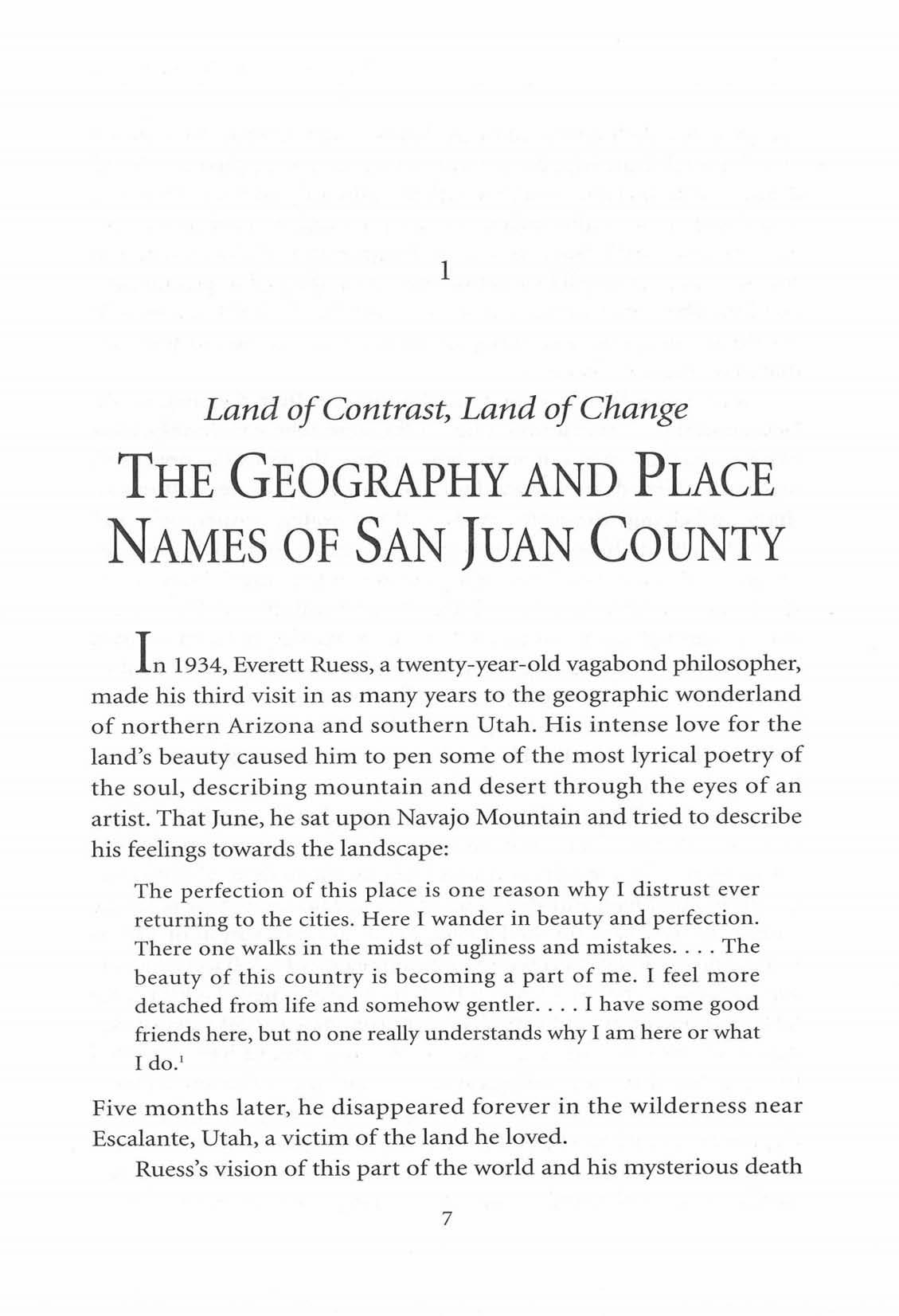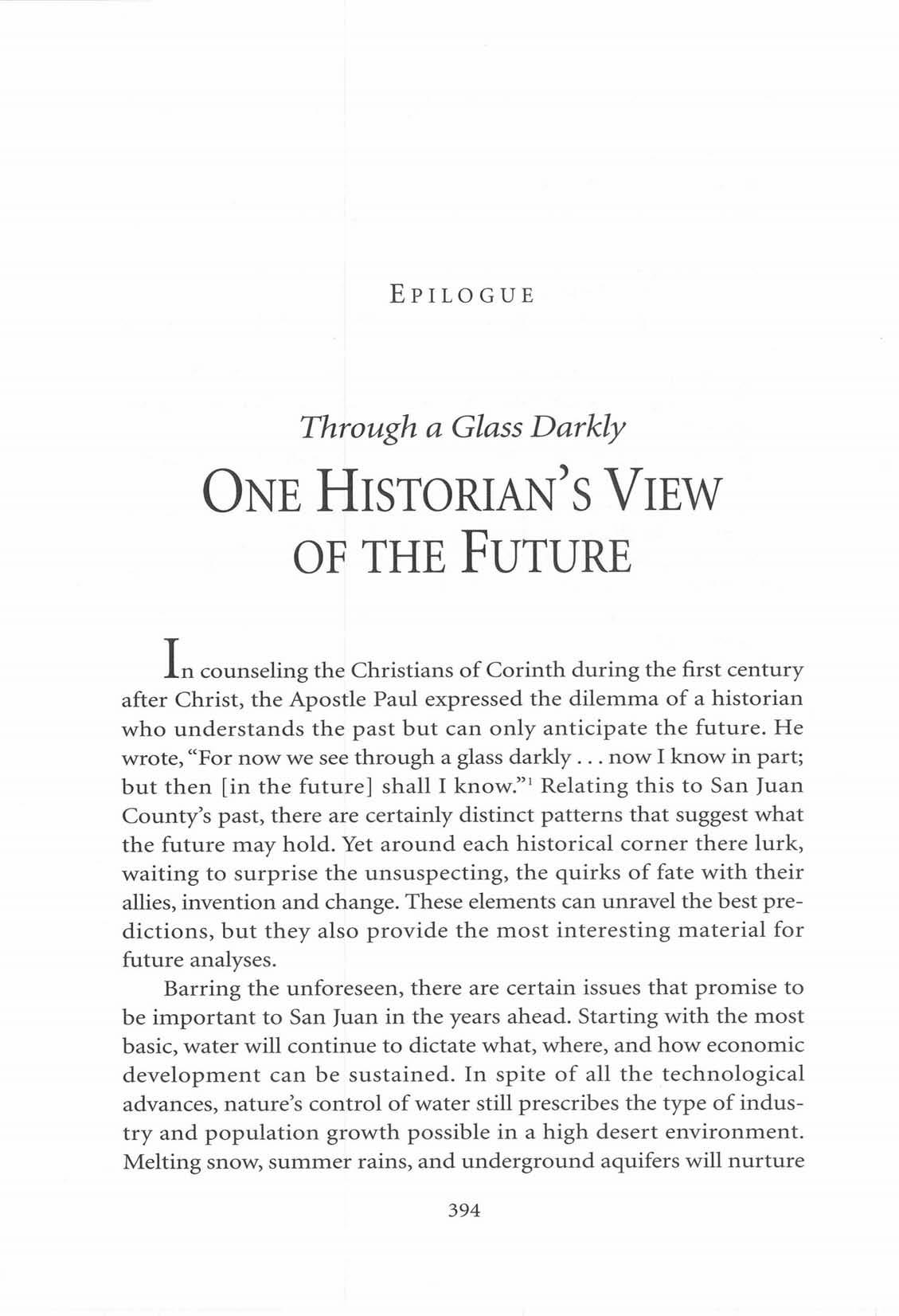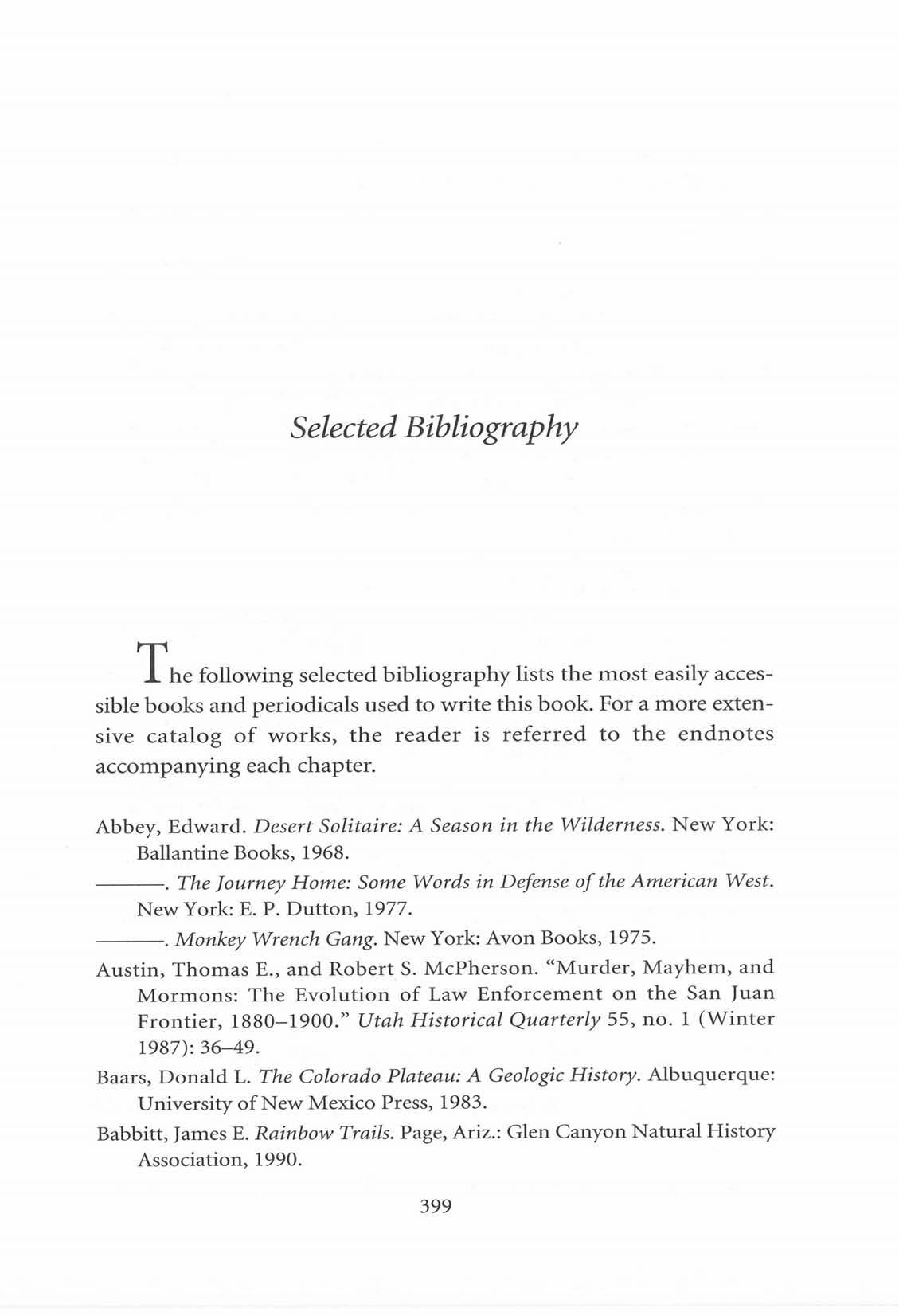Civilization Comes to San Juan
HOMESTEADING AND S i n c e the beginning of the United States, three terms-civilization, frontier, and wilderness-have been used to label the opposing ideas and forces affiliated with the westward movement. At one end of the spectrum, "civilization," meaning "city-dweller," gives rise to positive associations of education, safety, economic development, western religion, and an advanced technological lifestyle. On the other hand, wilderness, until recently, stood at the opposite end of civilization and was associated with words such as wild, savage, and heathen. Between these two extremes lies the frontier, that gray area where they meet. Civilization and city-building came to San Juan relatively late in the American experience. Often touted as one of the last frontiers to be settled in the United States, this isolated portion of Utah actually had three trickles of pioneers who arrived at approximately the same time. Parts of this story have been told elsewhere and so only a cursory look will be taken here. For instance, the saga of the Hole-inthe-Rock and the settlement of Bluff has found its way into numerous books and articles.' More time is spent here on places and





















